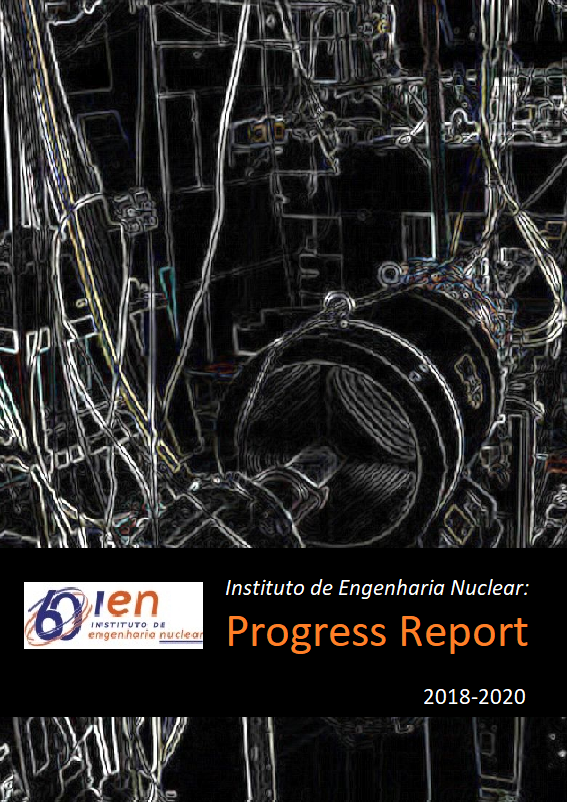Determination of mass attenuation coefficient in aluminum alloys using code MCNP6
Resumo
The present report evaluates the possibility to differentiate the aluminum alloys through their mass attenuation coefficients. The simulations were carried out using Monte Carlo method by means of the MCNP6 code [1]. Detection system consisted of a 1 ¼" x ¾" NaI(Tl) detector, a 241Am (59.5 keV) radiation source and a lead collimator to calculate the mass attenuation coefficients of a pure aluminum sample and the three aluminum alloys (2024-O, 3003 and 7075-O). The detector model used in the simulation was validated using standard calibration sources and its dimensions were obtained through gammagraphy technique in previous paper [2]. In addition, a pure aluminum disc was used in order to validate the simulation, which was positioned 53 mm away from the source. This disc has 10 mm thickness and 48 mm of diameter. The distance source-detector is 128 mm and the lead collimator (2 mm of aperture and 40 mm long) positioned in front of the source. The representation of the proposed geometry can be seen in Figure 1 [3].
The simulations of the aluminum alloys were performed following the same methodology, replacing the pure aluminum sample by each of the three aluminum alloys samples. The densities of pure aluminum and alloys are 2.69 g.cm-3, 2.78 g.cm-3, 2.73 g.cm-3 and 2.81 g.cm-3, respectively. The calculated mass attenuation coefficients were compared with the NIST [4] reference values using relative error (RE%), as shown in Table 1.
Table 1. Mass attenuation coefficients using 241Am radiation source
Sample
m/r (cm2.g-1)
RE (%)
MCNP6
NIST
Al
0.2776
0.2778
0.07
2024 alloy
0.3553
0.3450
-2.98
3003 alloy
0.2971
0.2937
-1.16
7075 alloy
0.4035
0.3877
-4.07
Observing the values of the RE% provided in Table 1, it is possible to verify that the model developed with MCNP6 code is effective, thus being a good simulation tool in the calculation of attenuation coefficients. Moreover, the results of this study showed that the mass attenuation coefficients increased proportionally according to the increase of the densities of each of the samples studied, making it possible to differentiate them from each other, using low energy sources, in this case 59.5 keV (241Am). More details about this study can be found in SANTOS et al., (2019) [3].
Downloads
Publicado
Como Citar
Edição
Seção
Licença
Copyright (c) 2021 Alessandra Galvão Menezes dos Santos, Ross Sophia de Freitas Dam, William Luna Salgado, César Marques Salgado

Este trabalho está licenciado sob uma licença Creative Commons Attribution-NonCommercial-NoDerivatives 4.0 International License.


